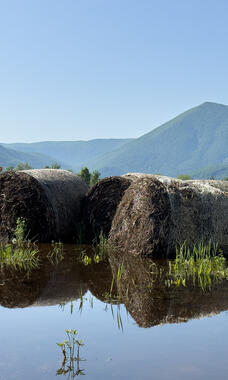The Environmental Protection Agency (EPA) requires that public water systems use chlorine for disinfection at the water treatment facility.
Vermont law requires water to be tested when a new groundwater drinking source is installed for single-family residences. Find out what you need to do.
What You Need to Know About Nitrates and Nitrites in Drinking Water Nitrogen can take different forms in nature and is important for life in both plants and animals. The most common form of nitrogen found in well water is...
Pesticides, petrochemicals and other organic chemicals are human-made and do not occur naturally in drinking water.
PFAS, including PFOA (perfluorooctanoic acid) and PFOS (perfluorooctane sulfonic acid), are manufactured chemicals that stay in the environment for a very long time and are harmful to your health.
The Vermont Department of Health worked with the Department of Environmental Conservation to respond to health concerns related to detection of the chemical PFOA in private drinking water wells in Bennington and North Bennington.
Cancer develops gradually as a result of many different factors related to lifestyle choices, environment and genetics. Anyone can develop cancer, but many cancers can be prevented.
Learn how to make sure your well or spring is properly constructed and maintained to help keep your drinking water safe from contaminants. Find information and requirements for real estate transactions and rental properties.
Public drinking water systems are regulated by the Vermont Department of Environmental Conservation. However, the Health Department recommends testing your water for lead. Learn more about testing for lead and other public drinking water concerns.
One in seven Vermont homes has unsafe levels of radon. Radon is a naturally occurring radioactive gas that can cause lung cancer. Testing is the only way to know if it is in your home.



